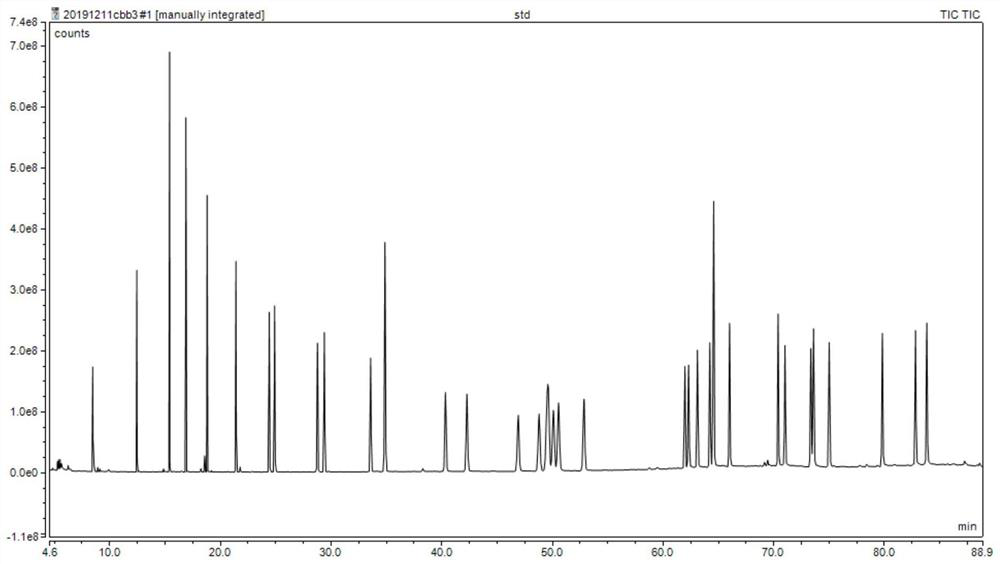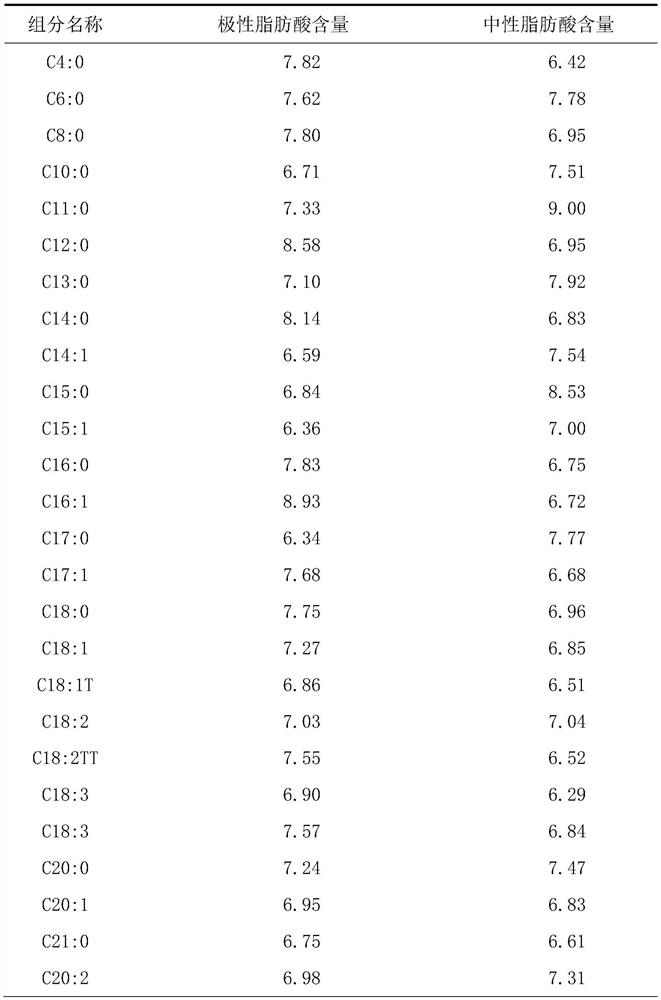Extraction and detection method of marine microalgae fatty acid
A technology of marine microalgae and detection method, which can be applied to measurement devices, instruments, scientific instruments, etc., and can solve the problems of inefficiency, inconvenience, and inaccurate detection results.
- Summary
- Abstract
- Description
- Claims
- Application Information
AI Technical Summary
Problems solved by technology
Method used
Image
Examples
Embodiment 1
[0044] A method for extracting and detecting marine microalgae fatty acids, comprising the following steps:
[0045] (1) Collection and crushing of Heterocurvium akashiwo
[0046] Take 240 ml of Heterosigma akashiwo based on the end of logarithmic growth, freeze the sample quickly with liquid nitrogen (to inhibit lipase activity), thaw and collect the cells by centrifugation (6000rpm, 4°C), the fresh weight of the cells is 15- 75 mg, and sonicated for 30 minutes in a cell disruptor, took 2 mL of chloroform:methanol (2:1, v / v) to extract lipids, and centrifuged at 12,000 rpm for 10 minutes at room temperature. The hydrophobic phase was extracted as a lipid extract, which was added with 0.01% (w / w) butylated hydroxytoluene (BHT) as an antioxidant at -20°C.
[0047] (2) Separation of neutral and polar lipids
[0048] After the extract was evaporated to dryness and washed three times with 1 mL of chloroform:methanol (98:2, v / v) to recover, the lipid extract was deposited on a so...
Embodiment 2
[0062] The difference from Example 1 is that the specific parameters of step (1), step (2), and step (3) are set, specifically in step (1), the collection and crushing of microalgae; Algae, freeze the sample in liquid nitrogen, centrifuge the sample after thawing, collect the cells after centrifugation, and then use a cell disruptor to sonicate the cells, take chloroform and methanol with a volume ratio of 3:2 to extract lipids, and then After centrifugation at room temperature, the hydrophobic phase was extracted as a lipid extract, which was added with 0.01% (w / w) butylated hydroxytoluene (BHT) as an antioxidant at -20°C.
[0063] In step (2) to separate neutral and polar lipids, evaporate the lipid extract to dryness and recover after washing with chloroform and methanol with a volume ratio of 95:5, deposit the lipid extract on a solid-phase extraction column filled with silica gel Above, neutral lipids were eluted with chloroform:methanol at a volume ratio of 95:5, followe...
Embodiment 3
[0066] The difference from Example 1 lies in the specific parameter settings of step (1), step (2) and step (3), specifically in step (1), the collection and crushing of microalgae; Algae, freeze the sample in liquid nitrogen, centrifuge the sample after thawing, collect the cells after centrifugation, and then use a cell disruptor to sonicate the cells, take chloroform and methanol with a volume ratio of 5:3 to extract lipids, and then After centrifugation at room temperature, the hydrophobic phase was extracted as a lipid extract, which was added with 0.01% (w / w) butylated hydroxytoluene (BHT) as an antioxidant at -20°C.
[0067] In step (2), neutral and polar lipids are separated, the lipid extract is evaporated to dryness and recovered after washing with chloroform and methanol at a volume ratio of 96:4, and the lipid extract is deposited on a solid phase filled with silica gel On the extraction column, neutral lipids were eluted with chloroform and methanol at a volume ra...
PUM
 Login to View More
Login to View More Abstract
Description
Claims
Application Information
 Login to View More
Login to View More - R&D Engineer
- R&D Manager
- IP Professional
- Industry Leading Data Capabilities
- Powerful AI technology
- Patent DNA Extraction
Browse by: Latest US Patents, China's latest patents, Technical Efficacy Thesaurus, Application Domain, Technology Topic, Popular Technical Reports.
© 2024 PatSnap. All rights reserved.Legal|Privacy policy|Modern Slavery Act Transparency Statement|Sitemap|About US| Contact US: help@patsnap.com










